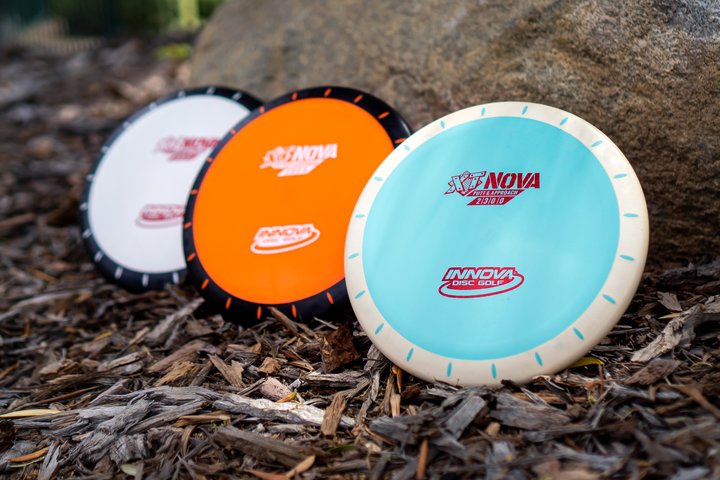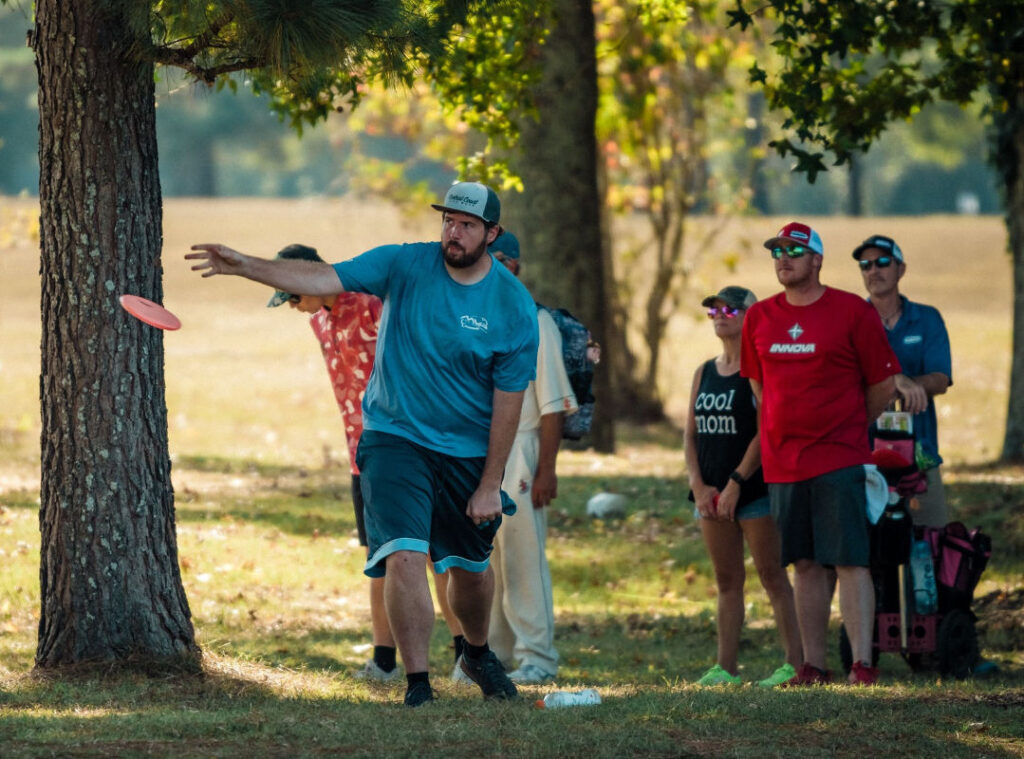8 Tips for Better Accuracy on Approach Shots
“Drive for show and putt for dough” is a popular saying in traditional golf, and it certainly applies to disc golf, as well. Disc golfers love to rip on big drives and get full flight out of a distance driver. And of course, we all know putting is crucial if you ever want to win a competitive event. The ability to make a very high percentage of C1x and C2 putts is one of the things that separates the pro disc golfers from us amateurs!
However, the most overlooked aspect of the game is the approach shot. When we are out practicing, we are usually doing field work to try and throw drives as far as possible. Then, we spend time practicing putts in circle 1 and circle 2. Not many people spend much time working on their mid-range game, though. This includes standard upshots that might be in the 100 to 300-foot range or maybe even a little longer, depending on your skills and the types of disc golf courses you are playing. It also includes scramble shots when you find yourself off the fairway and have to get a little creative. These are throws with your putters and mid-range discs you should take the time to practice. They are often the difference between saving par and taking a bogey or worse. Birdies are great to get, but bogeys are momentum-killers.
With this in mind, let’s look at a few tips to help you find better accuracy and consistency on your disc golf approach shots:
1. Practice Makes Perfect
As we’ve already suggested, practicing your upshots will make a huge difference when you are out on the actual disc golf course. When you are doing your fieldwork, practice throwing your Innova putters and mid-ranges at less than full power. Pick a closer target and work on laying up to it with a mid-range disc. Always remember that most disc golf courses are not open fields like your practice area, so work on different angles and shot shapes so that you know how to control your discs for specific shots.
2. Practice Stand-Still Shots
This cannot be stressed enough. You never know what your lie is going to be. Throughout any given disc golf round, you’ll be faced with some awkward stances. There are times you need to straddle and situations where you have absolutely no option to run up or even take a small step. Your approach game will benefit greatly when you are able to find balance and generate power from a stationary stance while maintaining control and touch on your throws.
3. Learn Different Scramble Shots
Scramble shots can be harder to practice, but look for areas or spend some time on a tough hole at your local course that has some trees and obstacles to throw around. You might even just have to use your imagination during practice. Work on stand-still forehands, flex shots, patent-pending backhands, overhand shots and flick rollers. Learn what all of your discs do when thrown different ways and this will become extremely valuable when you actually need to pull off one of these tricky shots in competition. Don’t fall too in love with trick shots, but have a few in your bag in case you need them in a tournament round.
4. Commit to Your Shot
One of the most common mistakes disc golfers make is not committing to shots. We’ve all done it plenty of times. You aren’t confident in a certain shot or disc selection and you end up throwing it poorly. This perhaps happens the most on upshots at awkward angles or distances. Envision the shot you plan to throw and then commit to it before you take your final stance. Even if it ends up being the wrong shot selection, you will gain more confidence and learn more lessons by focusing and executing the specific shot you had in your head. When you don’t commit, you just end up feeling disappointed in yourself and it’s hard to build confidence that way.
5. Learn Your Discs

Disc selection is crucial to approach shots. There may end up being multiple ways you can get from point A (your lie) to point B (near the basket). You decide which shot you want to take (see commitment above) and now you need to make sure and use the proper disc for that shot. If you need a dead-straight upshot, you aren’t going to pull your most overstable Innova mid-range out of the bag. You might pull out a Nova putter or a fairly neutral mid-range disc like an Innova Lion. Then, there are shots where you might feel more comfortable with a hyzer approach with a stable disc that has a predictable flight path. This is when you would reach for a slow-speed overstable disc like an Innova Pig, Caiman or AviarX3. Other situations may call for an understable disc and a touchy anhyzer line. There are times when throwing a fairway driver with less power makes sense to hit a specific line. This is when all that approach shot practice will pay off when you know your discs and which ones are best for any given upshot. You’ll find that some mid-range discs have a lot of glide that’s ideal for full throws while others have very little glide, making them great for controlled approaches.
6. Pick Your Target
When lining up any approach shot, you will want to pick a target. Whether it’s a specific tree near the basket or some other landmark, use that as your aiming point. If you are throwing an overstable putt and approach disc for a 150-foot righty backhand upshot, you know it is going to travel left at the end of its flight. If you consider that a stable disc will likely fade 20 feet, then aim at least 20 feet right of the basket to account for the natural flight of the disc and the power with which you intend to throw it. Even if it doesn’t end up fading quite as much as you thought, you are still probably pretty close and in a good position to make your putt. If throwing a neutral or understable disc, adjust your aim accordingly to account for the disc’s natural flight characteristics.
7. Account for Ground Play
One of the things we tend to forget about is what the disc will do once it hits the ground. Will it skip, slide or pick up and roll? This all depends on the terrain around the basket, as well as what mid-range disc or putt and approach disc you throw and how you throw it. When you are throwing an approach shot—especially if you are intending just to lay up—be sure and account for the ground play. You can’t fully predict what will happen every time, but it should factor into your upshot strategy.
8. Focus on One Shot at a Time

This is a tip that applies to every single shot on the course. You will throw some bad shots. You will get some bad breaks. You’ll get birdies. You’ll get bogeys. If your drive goes off the fairway, don’t get frustrated or panic. Focus only that next shot and execute. Disc golf is all about adapting to and overcoming each new challenge put in front of you during a round. Put the bad shots behind you and concentrate only on what’s ahead of you.
These are just a few simple tips to help you when it comes to practicing approach shots and refining your upshot skills. It’s all about growing confidence and being able to pull off the necessary shots when needed. Just remember to make approach shots part of your overall disc golf practice routine and it will make you a much more well-rounded player.
